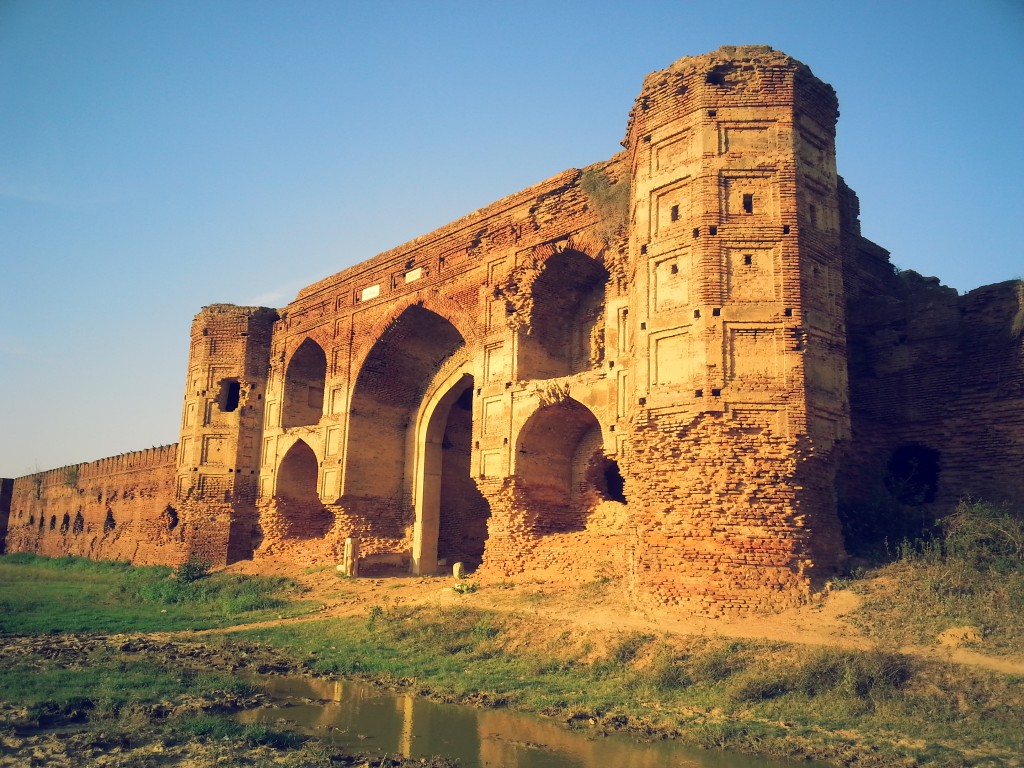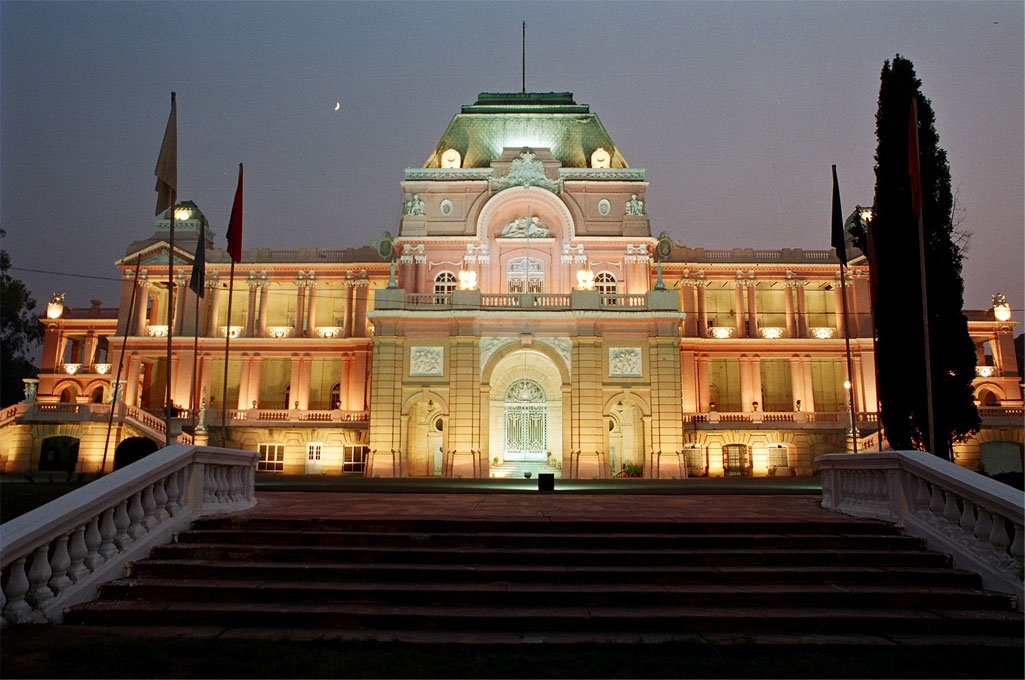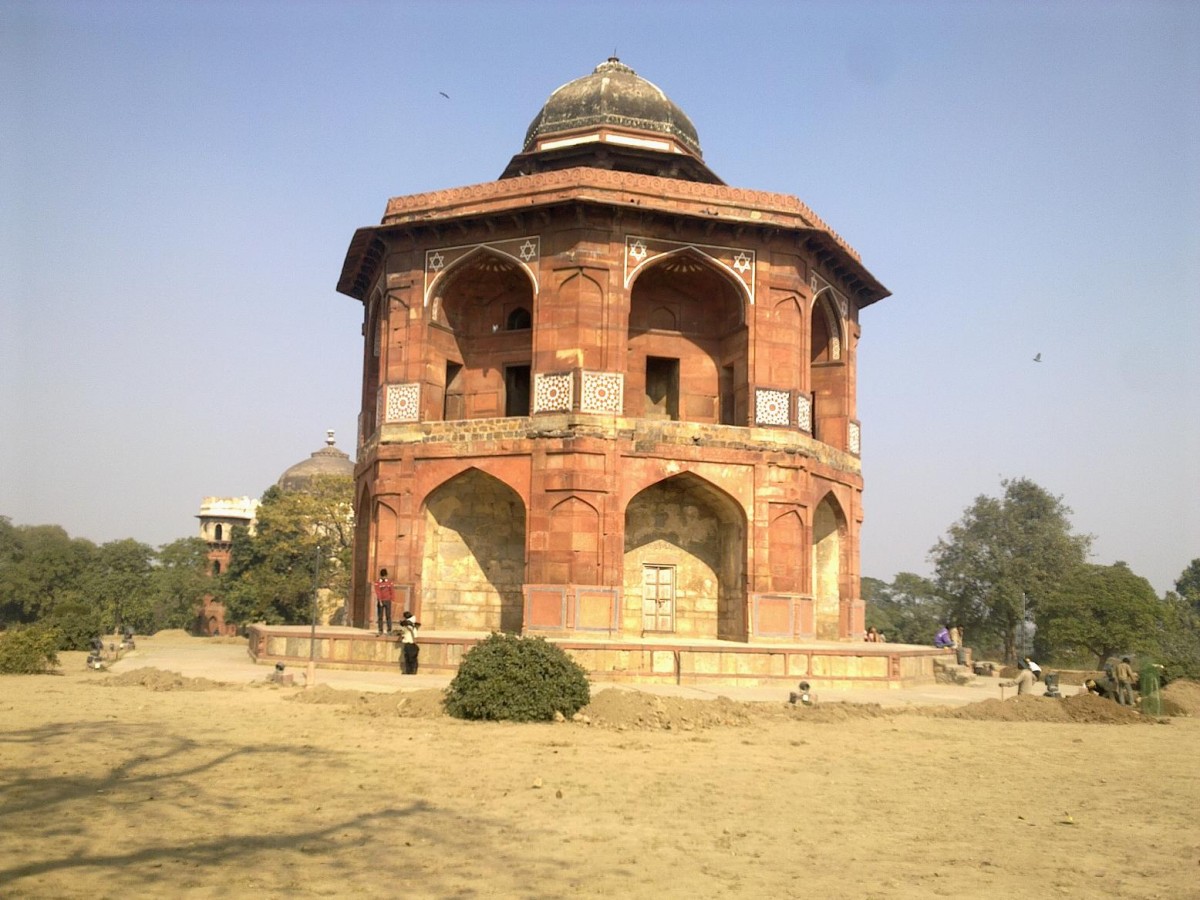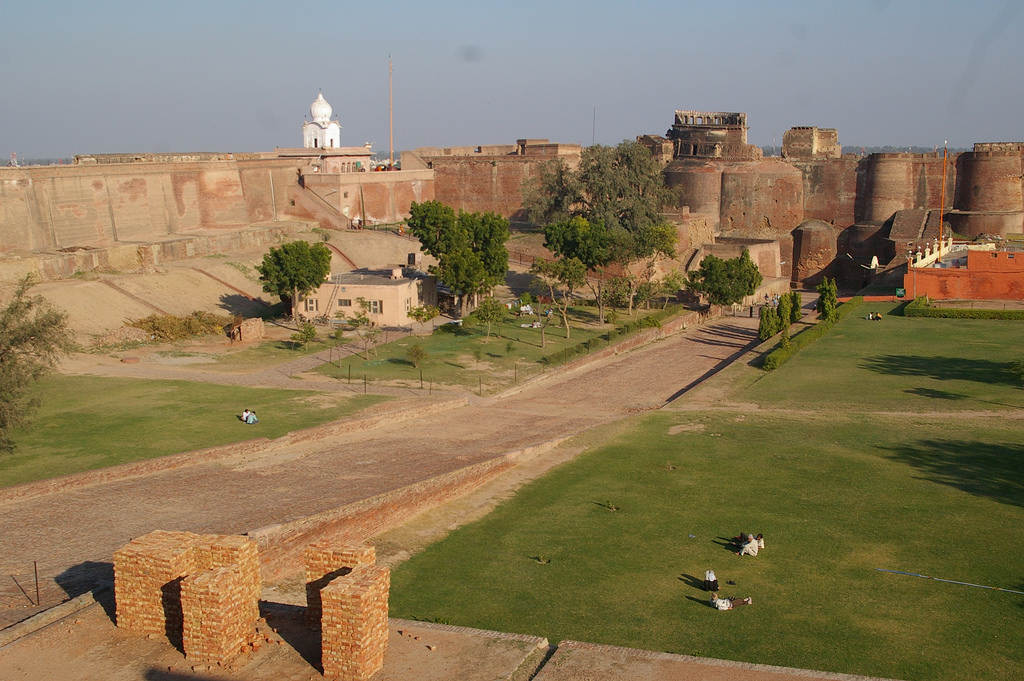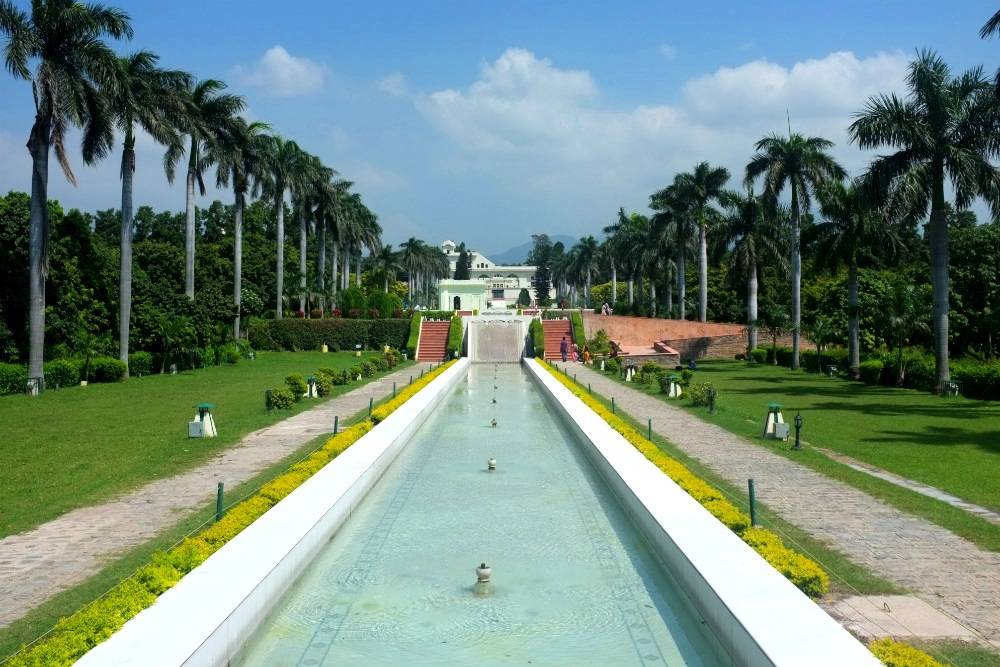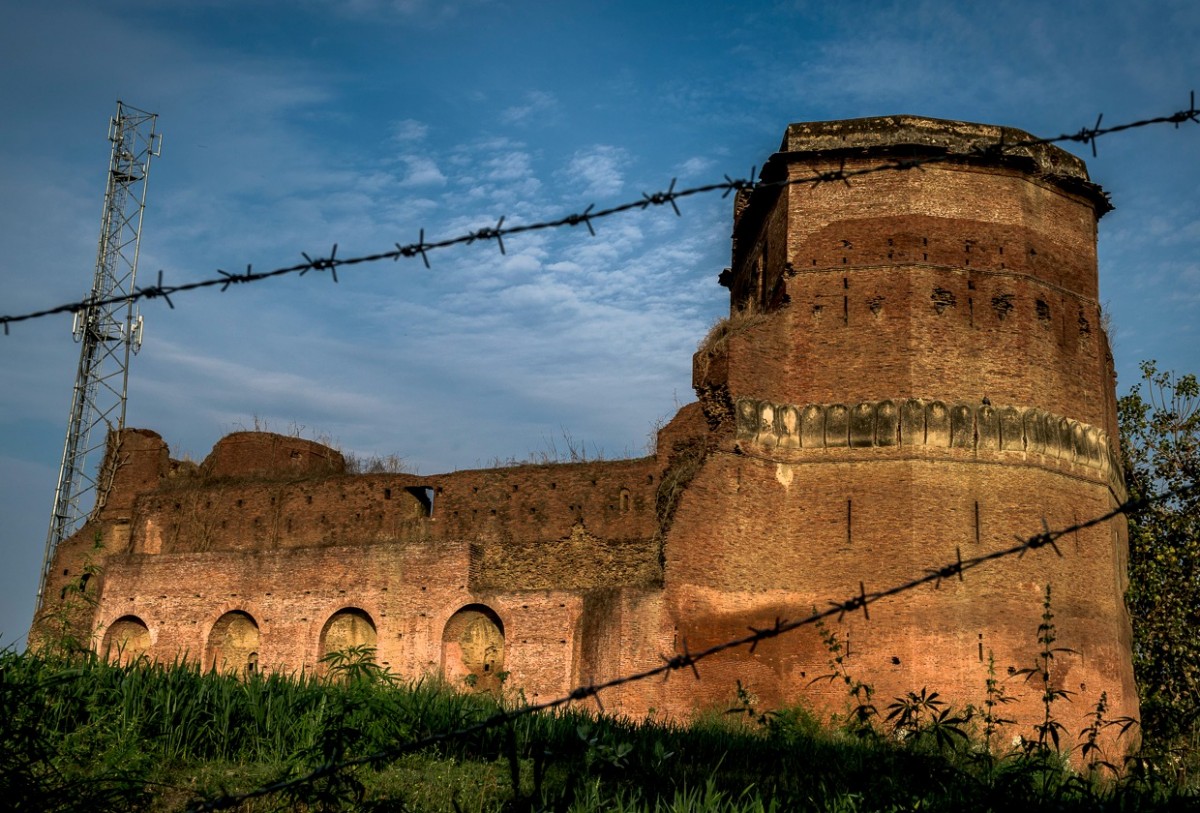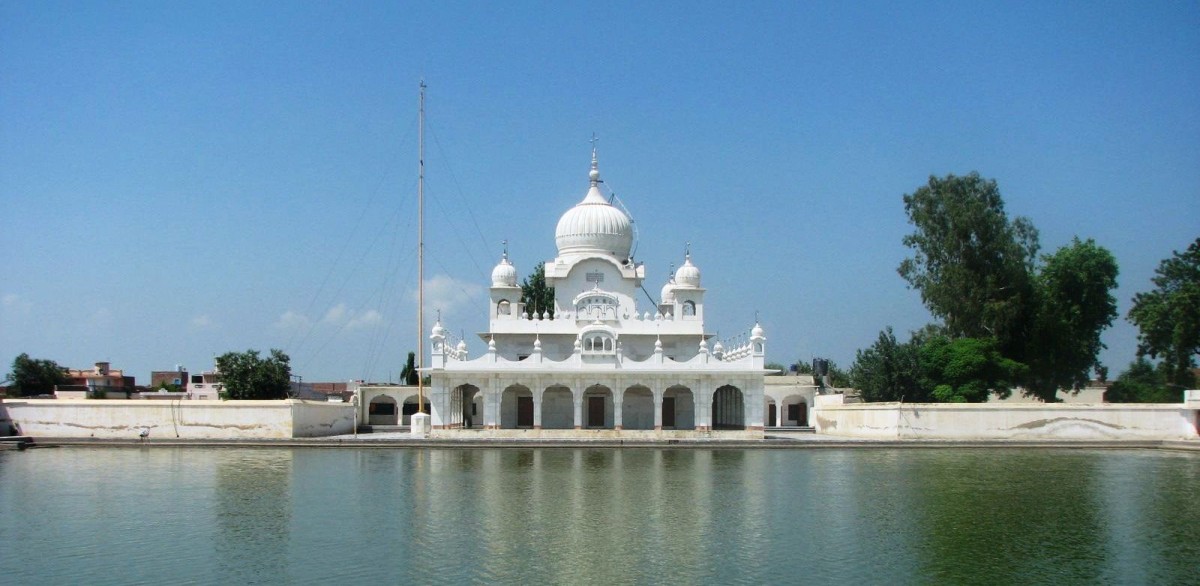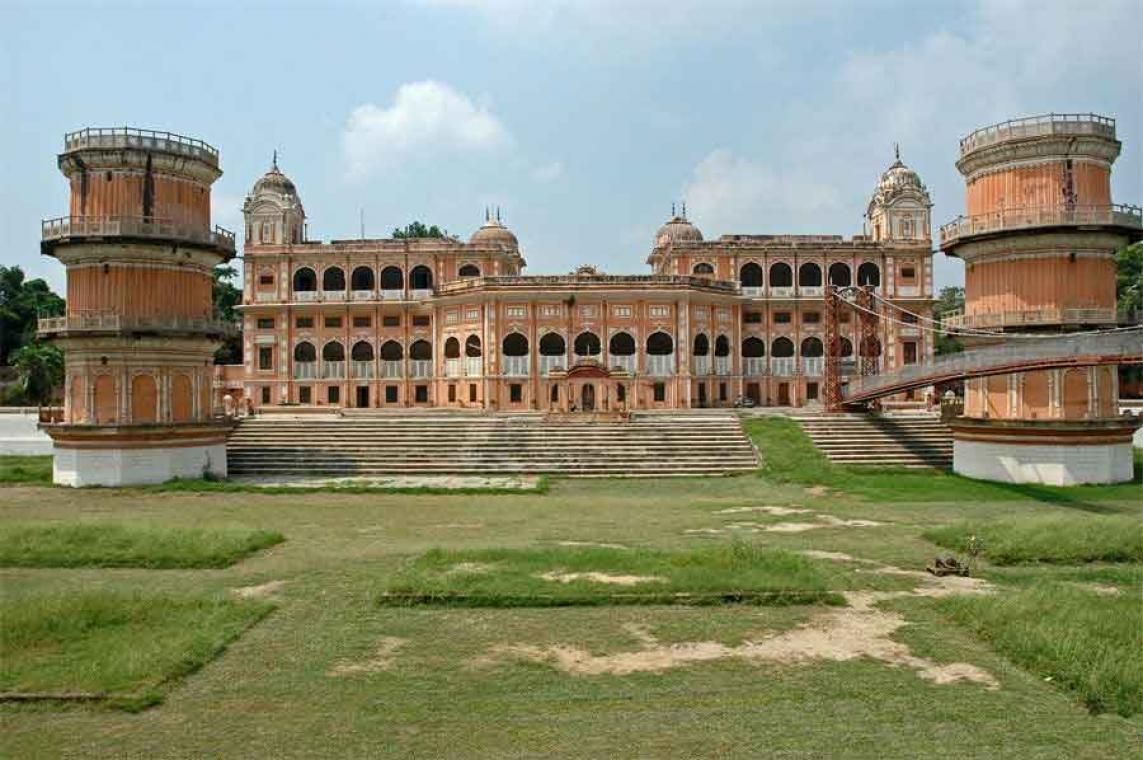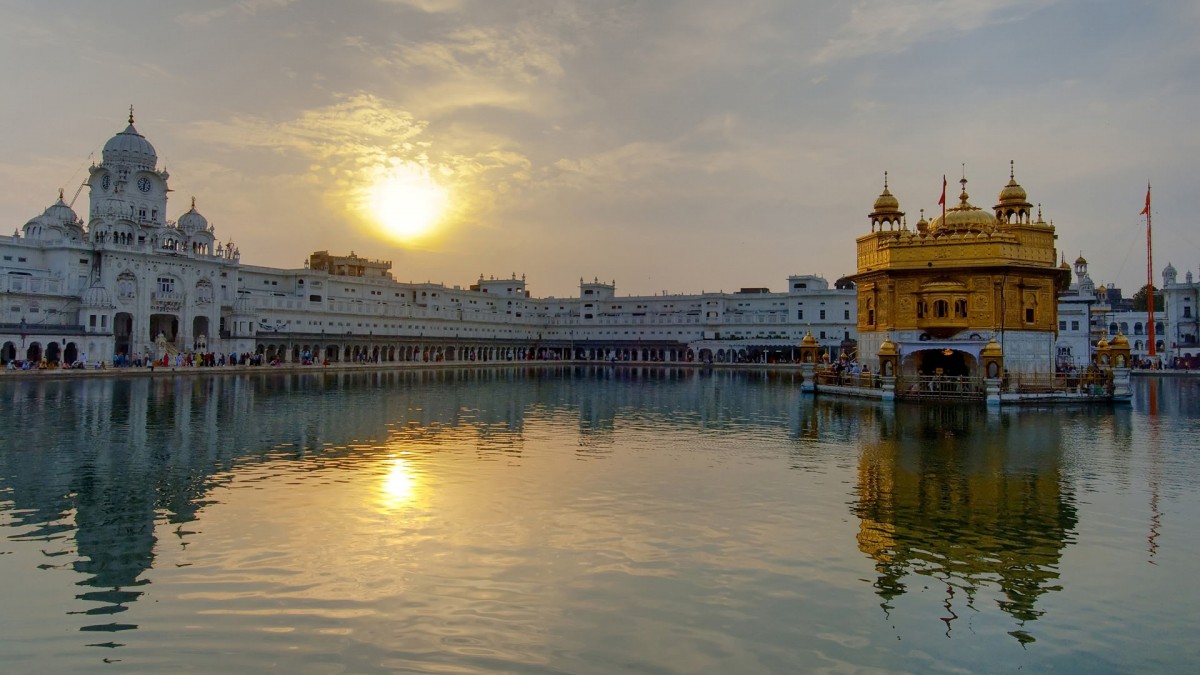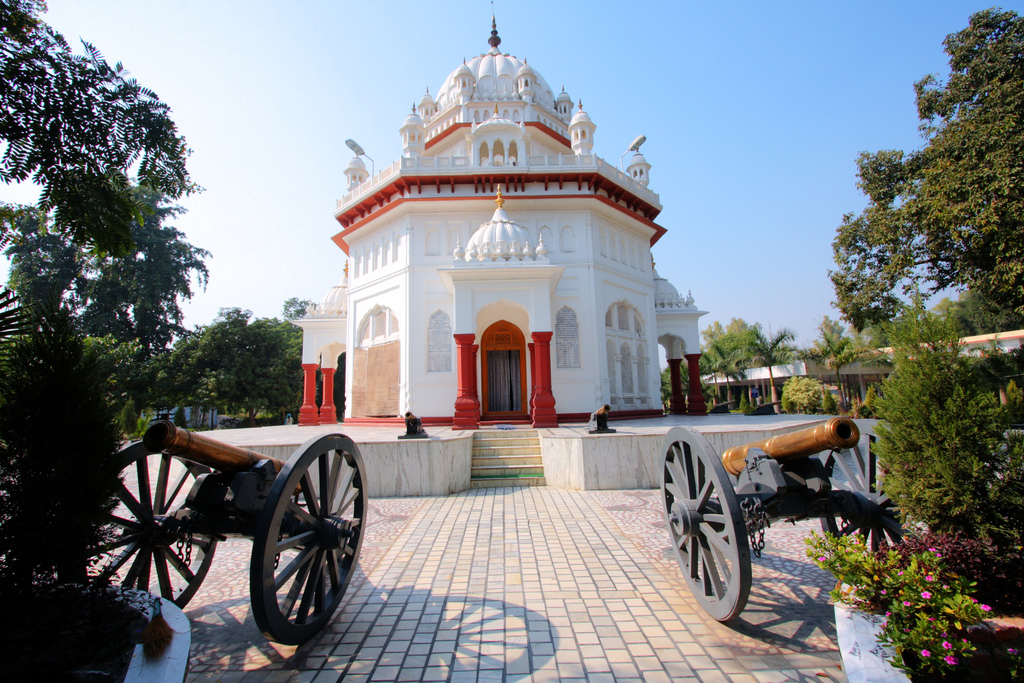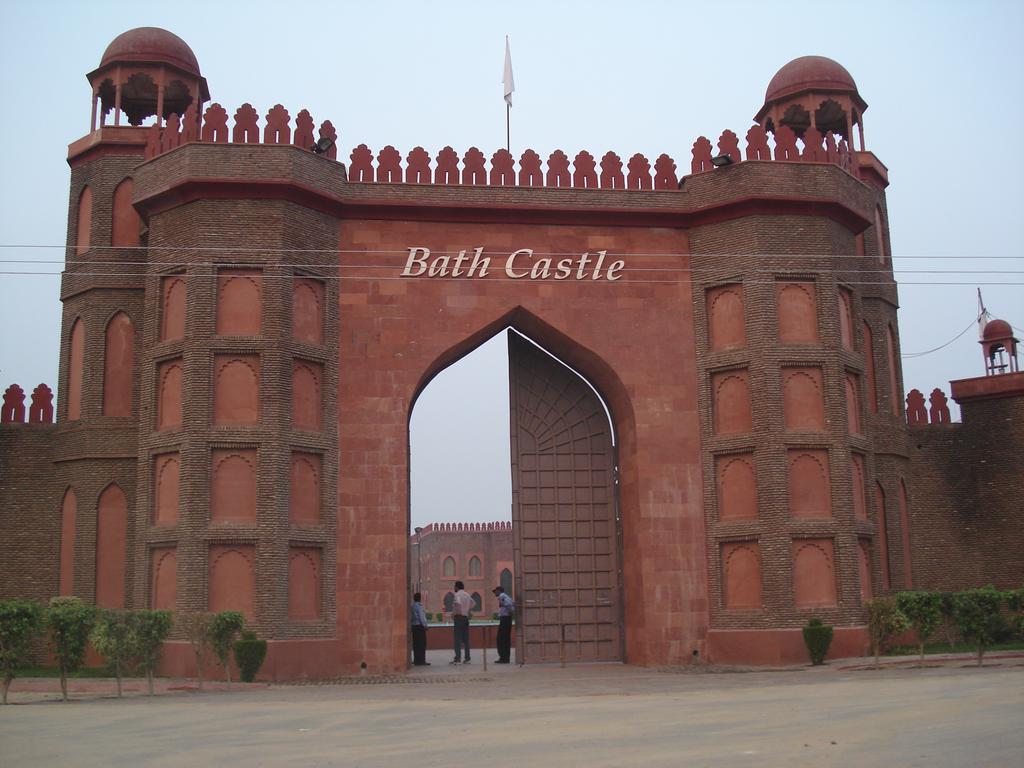
Jalandhar Tourism and Travel Guide
Ancient Period
In ancient time, the district or Kingdom of Jalandhar comprised the whole of the Upper Doabas from the Ravi to the Satluj. According to the Padama Purana, as quoted by
General Conningham the country takes its name from the great Daitya King Danava Jalandhara the son of the Ganga by Ocean.
The whole of Punjab and the area of present Jalandhar District was part of the Indus Valley Civilization. Harappa and Mohenjodaro are the sites where remains of the Indus Valley Civilization have been found extensively. The archaeological exploration made during the recent years have pushed the antiquity of the Jalandhar District of the Harappa period. On the basis of surface exploration, the following new sites have been bought on the Archaeological map of India and the traces of the self-same people as at Harappa and Mohenjodaro have also been detected in Jalandhar District at the following places:-
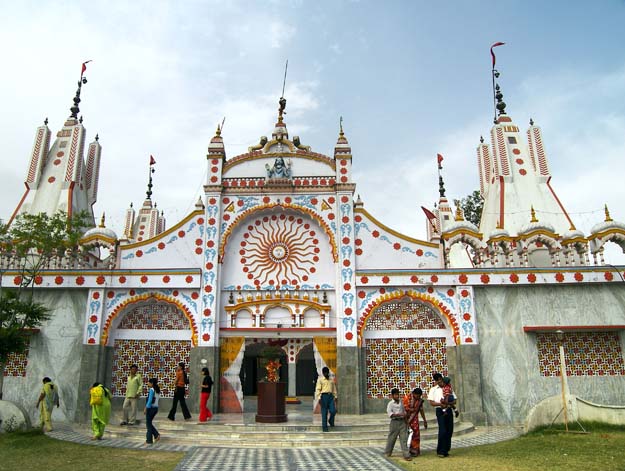
From the evidence mentioned above, it is established that the whole of the Jalandhar District was a part of the vast areas covered under the Indus Valley Civilization during the early period of history. This civilization developed prior to the Aryan Civilization in this region.
The excavations done and the places which is given above in the Jalandhar District have revealed the imprints of Harrapa culture in east Punjab the earlier two important sites i.e. (Harappa and Mohanjodaro) being in Pakistan. Rare and unique archaeological objects have been found in Nagar (Tehsil Phillaur) in Jalandhar District. The earliest known cities in India were in the Valley of the river Indus. The remains of a number of different settlements have been discovered by archaeologists. These are scattered over an area of thousand miles. The two biggest cities were Mohenjodaro and Harappa. These cities were inhabited from 2300 to 1700 BC.
The earliest historical mention of Jalandhar occur in the region of Kanishka, the Kushan King of northern India in whose time a council of Buddhists theologians was held near Jalandhar about 100 AD to collect and arrange the sacred writings of Buddhism and to bring about reconciliation between its various sects.
In the 7th Century, when the famous Chinese traveller and pilgrim Hiuen Tsang visited India during the reign of Harsha Vardhana, the Kingdom of Jalandhar or Trigartta under Raja Utito (Whom Alexender Cunningham identifies with the Rajput Raja Attar Chandra). It was said to have extended 167 miles (about 268 kms) from east to west and 133 miles (about 213 kms) from north to south, thus including the hill states of Chamba, Mandi and Suket (Himachal Pardesh) and Satadru or Sirhind in the plains. Raja Utito was a tributary of Harsh Vardhana. The Rajput Rajas appear to have continued to rule over the country right upto the 12th century, interrupted some time or the other, but their capital was Jalandhar and Kangra formed and important stronghold.
According to Chinese pilgrim Famine, who traveled India in the seventh century AD, there were so many Vihars and Maths of Buddhism
in India. In the Jalandhar District, there were as many as 50 Vihars and Maths of Buddhism. The Buddhism religion was adopted by a large number of people.
From the later half of the tenth century upto AD 1019, the district was

included in the Shahi Kingdom of the Punjab and Jalandhar was an important city in the region.
Medieval Period
AD 1296-1316: During the reign of Ala-Ud-din Khilji, is one of the numerous Mughal invasions, the invaders under Dua were defeated near Jalandhar by Ulugh Khan and Zafar Khan in AD 1297
AD 1398: In consequence of the sack of Delhi by Timur, the house of Tughlok had fallen
AD 1416: Malik Tughan assassinated the Governor of Sirhind, but was driven into the hills of Malik Daud and Zirak Khan.
AD 1417: Malik Tughan returned with a considerable army and besieged Sirhing, Zirak Khan was sent against him by Khizr Khan (AD 1414-1421) of Delhi, and on his approach be retreated towards the hills. He was then, it is stated, allowed to retain possession of Jalandhar
AD 1419: Tarikh – I – Mubarak Shahi mentions Tughan, Raja of the Turk-bachrhas of Jalandhar, as aiding Sultan Shah Lodhi, Governor of Sirhind and uncle of Behloi Lodhi, against a pretender, who had assumed the name of Sarang Khan and raised a rebellion in the mountain of Bajwara near Hoshiarpur, which were then depended on Jalandhar.
AD 1420: Tudhan again revelled against Khzir Khan besieged Sirhind, and overran the country as far as Mansurpur and Payal. Malik-Khair-ud-din was sent against him from Delhi and was joined at Samana by the forces of Zirak Khan, and Tughan retreated, crossing the Satluj, at Ludhiana. But the river being low, the royal forces followed on which he fled into the country of Jasrath KhoKhar, and his wife was given to Zirak Khan
AD 1421 Zirak Khan, the then Governor of Jalandhar was obliged to withdraw into the fort of Jalandhar, on the approach of Jasrath Khokhar, who after a year recorded the river and marched against him. He next besieged Sultan Shah Lodhi in Sirhind, but on the approach of the new Emperor Mubarak Shah raised the siege and released Zirak Khan at Ludhiana
AD 1431-31: Jasrath defeated Malik Sikandar on the Be n near Jalandhar, took him prisoner and afterwards laid seize to Lohare, he retreated and Nasrat Khan was placed incharge of Lohare and Jalandhar. In August 1432, Jasrath returned and attacked him, but was defeated. In the Muharram of September 1432, Malik Allah Dad Lodhi, who was sent to relieve Nasrat Khan was attacked by Jasrath near Jalandhar.
AD 1441: Muhammad Shah confirmed Bahlol Lodhi of Sirhind in the Governership of Lahore and Dipalpur and sent him against Jasrath. But Behlol Lodhi came into terms with the Khokhar Chief, revolted and remained independent and finally in AD 1450 became sovereign of Delhi.
AD 1445- 51: India was split into a number of independent states at the time of Alauddin Alam Shah. The Sultanate of Delhi had long before the rise of the Sayyids been considerably diminished in its size and strength. At that time, Sarang Khan in the Bist Jalandhar Doab created disturbances, which has to be crushed under the personal direction of the Sultan.
AD 1524: On Babar’s fourth invasion of India in the year, he gave Jalandhar and Sultanpur in Jagir to Daulat Khan Lodhi as whose instigation he had come.
AD 1540: Humayun was expelled by Sher Shah. His retreat was covered at
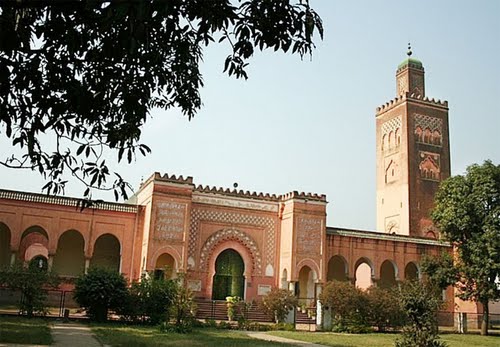
Jalandhar by his brother, Mirza Hindal, who was finally obliged to retire before the Afghans, who crossed the Beas at Sultanpur.
AD 1555: On Himayun’s return in this year, Bairam Khan was sent against an Afghan detachment at Hariana in the Hoshiarpur District and after driving it back on Jalandhar, he advanced and occupied the surrounding country.
AD 1556-1605: On the defeat of Sikandar Sur at Sirhind and his flight to the hills, Shah Abu Maali was sent to the Jalandhar to hold him in check. But instead of staying there, he advanced to Lahore and thus gave Sikandar Sur an opportunity of collecting of army and making another effort to secure his throne. In consequence, Akbar was sent incharge of Barian Khan to the Punjab. After receiving the submission of the Raja of the Kangra, Akbar took up his residence at Jalandhar, where among others, Kamal Khan, a grandnephew of Jasrath Khokhar waited on him and was well received. Akbar now called to the east of meet Hemu, and during his absence, Sikandar Sur defeated Khizr Khan, Governor of Lahore, at Chamiari. Barian Khan, who had been appointed Khan Khanan of Akbar’s accession in 1560, and had been virtual sovereign lost his power and withdrew with the avowed intention of proceeding to Macca. On this way, however, irritated at some further events, he changed hi intention, and going to Dipalpur, he collected troops and prepared to attack Jalandhar. He advanced by way of Tihara, where a party of his friends under Wala Beg was defeated, by Abdulla Khan , Mughal. Shortly after, he himself was brought to action and beaten by AtgahKhan on 23 Augest 1560, at Gunachaur, near Rahon. During Akbar’s reign, copper coin were minted at Jalandhar and his minister Todar Mal, made settlement of land revenue in Jalandhar Doab. Guru Arjan Dev founded the town of Katarpur in 1539.
AD 1605: Shortly after the accession of Jahangir, hi son Khusro revelled and leaving Agra, withdrew to Lahore via Delhi. He was besienging the citadel of Lahore when heard of the Emperor’s advance guard at Sultanpur, and at once marched for the Bea. When he reached Bhairowal, on that river, the imperical forces had already crossed and battle took place in which he was defeated. During Jahangir’s reign(1605-27), Jalandhar Doab received special attention because of Nurjahan’s attachment with Nurmahal. She had been brought up there and among other things, she got a big Serai built there.
AD 1627-1658: Under Jahangir’s successor, Shah Jahan, the Serai and Dakani was built on high road between the Delhi and Lahore. Many villages were founded. The new town of Phillaur dates from the reign of Shah Jahan, when its site, then covered with ruins, was selected for on of the Serai on the imperial road from Delhi to Lahore.
AD 1632: Guru Teg Bahadur was married to Mata Gujri daughter of Lal Chand, Khatri of Kartarpur on 15 Asuj 1689 Bikram.
AD 1634: The battle of Kartarpur was fought between Mughal troops and Guru Hargobind. The imperial troops were routed and both Painda Khan and Kala Khan were killed.During the rest of the 17th Century, Jalandhar remained firmly attacked to the Delhi Empire. With the death of Aurangzeb in 1707. Mughal Empire began to lotter.
AD 1710: Banda Bahadur received appeals from the peasants of the Jalandhar Doab to help them against the Mughal Faujdar, Shams Khan of Jalandhar. The news of Banda’s return was enough to put heart into the Sikhs and they rose to throw off the yoke of Mughals. Shams Khan was defeated in Rahon.
AD 1716: The capture and execution of Banda Bahadur and his followers in the year 1716, and the persecution of the Sikhs that followed, completely crushed them. But the Sikhs were temporarily subdued.
AD 1738- 39: After the invasion of Nadir Shah during which he put Nurmahal to ransom, the Sikhs again appeared in arms. But after a temporary success, they were defeated by Adina-Beg, who had been appointed Governor (Faujdar) of the Jalandhar Doab.
AD 1748: Adina-Beg and the leaders of the more important Sikh confederacies were also appossed to Nadir Shah who was finally defeated in 1748 near
Sirhind by Muin-ul-Mulk (popularly known as Mir Mannu), the son of the grand Wazir, and obliged to evacuate the Punjab
AD 1748 – 1752: Mir Mannu became a governor of Punjab and ruled from 1748 to 1752, retaining Adina Beg as his Deputy in the Jalandhar Doab. Jassa Singh Ramgharia in 1752 took service with Adina Beg and with all the leaders of the Confederacy, except one, Tara Singh, helped him to defeated the Ahluwalias, Kanayas and Sukerchakias at Makhowal. Adina Beg is said by one account to have given him charge of the large tract in the Jalandhar Doab of which the subsequently became master.
AD 1755: After the death of Mir Mannu in 1752, the Governorship of Lahore was held by his widow Murad Begum on the part of Afghan King till 1755, when she was treacherously seized by her son-in-law, the Wazir of Delhi. This led to the fourth invasion of Ahmad Shah, during which he plundered Nurmahal and slaughtered its inhabitants.
AD 1756: Adina-Beg with the assistance of Jassa Singh Ahluwalia took possession of Jalandhar and defeated the Afghan General Sarbuland Khan, who had been left in charge. On his back to Kabul, Ahmad Shah had pillaged and brunt Kartarpur.
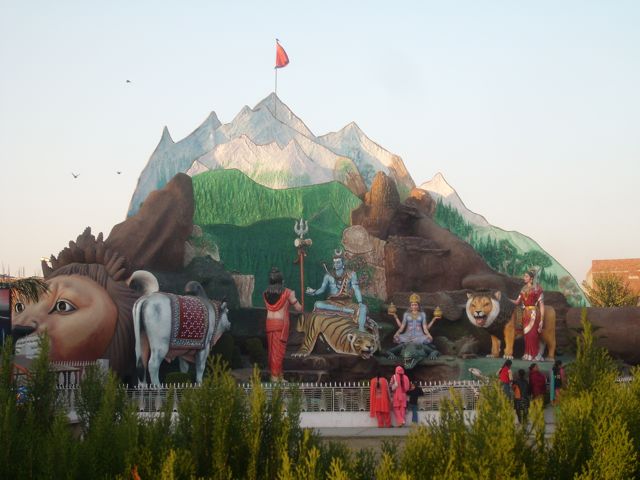
AD 1757: During the year, the Sikhs under Badbhag Singh, with the connivance of Adina Beg, in the revenue treated Jalandhar similarly. But though supported by Sikhs, Adina Beg found his position precarious and called in the assistance of the Maratha leader, Regoba. The Marathas expelled the Afghans and occupied the whole of Punjab. In 1758 Adina Beg was made the Governor of Punjab and died at the end of the year, leaving no son to succeed him.
AD 1759: The era of Sikh Confederacies (Misls) which succeeded that of foreign domination had begun in the Doab in this year, immediately after the death of Adina Beg. There were twelve Misls, i.e. (1) The Nakais, (2) The Nishanwalias, (3) The Kanayas (4) The Sukrchakias (5) The Shahids (6) The Bhagins (7) The Phulkians (8) The Ahluwalias (9) The Rmagharias (10) The Faizullapurias or Sinhgpurias (11) The Karora Singhias and (12) Dallewalias. The Kanahayas from some time held a large tract in the upper part of the Doab, from which they had been ousted by the Ramgharias. Sukerchakia in the person of Ranjit Singh, became master of whole upper Doab. The connection of the Bhangis Misl with Jalandhar was almost equally sight. Lehna Singh, the Principal leader of one branch of this Confederacy was a native of Mustfapur, a village, near Kartarpur in the Jalandhar District.
AD 1760: Tara Singh Gheba captured Dakhni in this year from Sharf-ud-din, an Afghan of Jalandhar. After that he marched towards the east of the Jalandhar and fixed his residence there.
AD 1761: Ahmad Shah invaded India for the fifth time, drove out the Marathas and at the Battle of Panipat destroyed forever their chance of being again masters of the Punjab,. He returned to Kabul laeving Buland Khan, Governor of Lahore and Zain Khan, Governor of Sihind. By the time, the Sikhs were so strong that they began to built forts all over the Country. They defeated Khwaja Ubed, who was command at Lahore.
AD 1762: Karora Singh, one of the founder of the Karora Singhias Misl was a Virk Jat (some say a Khatri) and belonged originally to the Faizullapiria confederacy. He made himself independent and took possession of Hariana and Sham Churasi in the Hoshiarpur District and had also lands in the north of the Jalandhar, where the confederacies continued to be represented by the Sardars of Laroya and Naugaja in Jalandhar, and of Sirhal Kazian, in Nawashahr. He was killed and was succeed by Sardar Baghel Singh who retuned to the Punjab and acquired the country about Talwan in south-west of Phillaur Tehsil. Amad Shah Abdali appeared for the sixth time and falling on the combined Sikh forces near village Kup (district Sangrur) where they were engaged in hostilities with Zian Khan inflicted on them the most terrible defeated they had ever experienced. This holocaust of 5 February 1762, ios Known to the Sikhs as the Vada Ghallughara (the great massacre). Howerver, when Ahmad Shah had gone back to Kabul, leaving Saadat Khan, Government of Jalandhar, the Sikhs came together again. They defeated and slew Zain Khan near Sirhind in December 1763. This victory established Sikh independence.
AD 1764-67: Though Ahmed Shah returned in 1764 and again in 1767 when he made the Katoch Rajput Chief, Ghamand Chand Governor of jalandhar,he did not recover any substantial power and as far as the Jalandhar Doaba is concerned, Afgan sovereignty, even in name, ended in the latter year.
AD 1772: The Dallewalia chif was on inimate terms with the Phulkian family of Patiala as Bibi Chand Kaur, daughter of Raja Amar Singh of that state was married to his son, Dasondha Singh. The Dallewalia Chief alongwith others chiefs, came to the assistance of Amar Singh, when the latter`s half brother Himmat Singh, had rebelled.
AD 1776: The Ahluwalias, Kanhayas and Sukerchakias attacked the Ramgarhias, took all the country and drove Jassa Singh across the Sutluj, where he remained for seven years.
AD 1778: When the Raja had been defeated by Sardar Jassa Singh Ramgarhia, Tara Singh was one of the Chiefs who hastened to his help. Another ally from Jalandhar Doaba was Bibi Rajinder of Phagwara. Hari Singh originally belonged to the Dallewalia confederacy.
AD 1781: On the death if Raja Amar Singh, the Dallewalia Chief backup the rebellion of Sardar Mahan Singh against Raja Sahib Singh who was the brother of Bibi Chand Kaur, Tara Singh`s daughter-in-law. But he soon deserted the rebal Sardar who was then obliged to surrender.
AD 1783: The Kanhayas had grown too powerful to please the Sukerchakias and the latter in alliance Jassa Singh who after some fighting, recovered his old territory.
AD 1803 Jassa Singh Ramgarhia died in 1803 and was succeeded by his son, Jodh Singh. In 1805 Jodh Singh assisted Lord Lake when he entered the Doab in pursuit of Jaswant Rao Holker, who plundered fifty of Ramgarhia villages.
AD 1807: Ranjit Singh crossed the Satluj and attacked the Rajput fort of Nariangarh in the Ambala District. Tara Singh Gheba, accompanied him got ill and died on his own way home during the siege. His death was kept secret while the body was sent in all hast to Rahon to which he belonged. According to J.D. Cunningham, Tara Singh Gheba`s widow, Rani Rattan Kaur ” equaled the sister of the Raja of Patiala in spirit and she is described to have girded up her garment and to have fought, sword in hand, on the Jalandhar Doaba had been absorbed into the dominon of Ranjit Singh and made over to Dewan Mohkam Chand.
AD 1809-1811: The Karora Singhias lost Talwan, with Shergarh and Hariana to Ranjit Singh. The Faizullapuria Misl came under Maharaja Ranjit Singh rule. In September 1811, Diwan Mohkam Chand on the part of Maharaja Ranjit Singh, supported by Ramgarhia and Ahluwalias Chiefs, took Jalandhar and other forts as Bulandpur, about 5 km north of Jalandhar and Patti at Hoshiarpur District and obliged Sardar Budh Singh to fly for safty to Ludhiana.
AD 1814-1819: Diwan Mohkam Chand died in October 1814 and was succeeded by Moti Ram. After the death of Jodh Singh in 1816, his family began to quarrel and Ranjit Singh being asked to arbitrate, took the possession of Ramgarhia Misl. Moti Ram held the appointment till he was made the governor of Kashmir and in his place Jalandhar was taken by his son Kirpa Ram.
AD 1839 Maharaja Ranjit Singh died.
AD 1845 – 46: In the first Anglo Sikh War (1845-46), the Jalandhar Doab was not scene of any remarkable military event. The army of Sardar Ranjodh Singh Majithia marched through Doab was joined by the troops of Ahluwalia Chief. The crossed the Satluj at Phllaur on 17 January 1846 and after a temporary success at Badowal, were totally defeated by sir Henry Smith at Aliwal eleven days later and driven across the Sutlej at Chug, 3 km sough of Talwan. The sikhs retreated to Phillaur and disappeared. After the battle, the main body of English army market for Sobraon, while Brigadier Wheeler crossed the river in pursuit of the Sikhs also near Talwan and advanced to Phillaur and occupied the fort, the keys of which had been made over to him at Talwan by Chaudhari Kutb-ud-din, who for this service got a pension and afterwords a grand of waste land, where the village of the Kutbiwal now stands, From Phillaur, the English marched to Jalandhar. The country between Sutlej and Beas was ceded to the British.
Modern Period
AD 1846: John Lawrance was appointed commission of the Jalandhar Doaba on its annexation in 1846. Cantonements were built at Jalandhar, Phillaur, Nakodar and Kartarpur.
AD 1857: When the great uprising of 1857 occurred, the 6th light Cavalry, the 36th and 61st Native Infantry and some Native Artiliary were staitioned at Jalandhar. Brigadier Hartley was in command. But was succeded by Brigadier M.C. Johnstone before the actual outbrake ocured at Jalandhar. The Civil officers were the Commisioners, Major Lake, The Deputy Commissioner, Captain Frington, the Assistant Commissioner, S.S. Hoggand the extra Commissioner G.Knox N.P. the Namdhari, papurly called Kuka Movement was started by Baba Ram Singh of village Bhaini Sahib in Ludhiana district. And assembly of his followers was called at Bhaini Sahib on the Baisakhi day in 1857. The five Sikhs who were administrated on the occasion included Bhai Sadhu Singh of village Durgapur in the Nawashahr tehsil. Phillaur was occupied by the 3rd Native Infantry during the great appriding of 1857, when the news of the outbreak at Meerut arrived, on 12 May 1857, Major Lake was not at Headquarters, but Captain Farrigtion was present at a council heald by Brigadier Heartly, at which it was determined to secure Phillaur and to establish Relegraph communication with it. The native troops had been replaced by 150 man of the 8 foot, by the next morning. Randhir Singh the raja of Kapurthala with his brother Bikram Singh proceeded to Jalandhar with the all troops he could collect and remained there for whole of the summer. On 7 June 1857, a fire broke out in the Cantonments. When the officers, went down to extinguish the fire, they were fired on by the native troops. Many of them were wounded. Next morning, the rebel troops left Jalandhar in two parties. One went off in an orderly manner towards Hoshiarpur, and marching about 208 Km. in 54 hours, made good it escape along the hills. The second and large party made for Phillour where they reached the same morning. Here they were joined by the third Native Infantry and crossed the river followed by the pursuers. On 10th June, the pursuit ceased at Dehlon and 8th Foot return to Ludhiana by the evening and thence to Jalandhar, where it afterwards joint General Nickolsons moveable column and assisted in disarming the 33rd and 35th Native Infantry regiments at Phillour on June 25. The forces at Jalandhar was strengthened by 300 Tiwana Horse under the command of Sher Mohamad Khan.
AD 1869: The railway line from Beas to Jalandhar was opened in 1869 and was completed upto Phillour by the next year. The Doab was linked to the rest of the punjab by the railway bridges, constructed over the Beas in 1869 and over the Sutlej in 1870.
AD 1900: The sixteenth session of the Indian National Congress was held at Lahore in December 1900. Delegates from Jalandhar District also attended this session. The Punjab Land Alienation Act, 1900 saved the agricultural land from passing to the money lenders but it did not solve the problem of rural indebtedness.
AD 1913-15: With headquarters of San Francisco (USA), the Ghadar Party was formed in 1913 to liberate India by force. From among the Ghadrites, which disembarked from the ship Kamagata Maru (which arrived at Budge Budge on 21 September 1914) 32 belonged to district Jalandhar. Of these, 14 were imprisoned and 3 killed in the police firing. Those killed were, Inder Singh of village Sidhu or Sidhupur, Arjan Singh of village Dhada (Tehsil Jalandhar) and Lachhman Singh (village not known). From among the passengers arrive by the ship Tosa Maru at Calcutta on 19 Oct. 1914, Diwan Chand of Nakodar was put under house arrest. Barkat Ali and Jalal Khan of Village Apra, Tehsil Phillaur nad Rehmat Ali of Jalandhar put under house arrest. Bhag Singh of village Chamiara (Tehsil Jalandhar) who arrived by the ship Edgware on 7 March, 1915 was put under house arrest. Out of the seven passangers who arrived by the ship Austerley on 9 March, 1915, Bhagwan Singh of village Phalpota (Tehsil Phillaur), Daleepa of village Jamsher (Tehsil Jalandhar), Jagta of village Raipur, Labu of village Barwa (tehsil nawanshahr) and Miran Baksh of village Sharkpur Doaba (tehsil Nakodar) were immediately arrested. In spite of Governments precautions and internments, many of the Ghadarites were able to reach Punjab. They exhorted the people to rise but not with much success. The Ghadarites were suppressed with a heavy hand. A large number of them were rounded up and were tried by special tribunals constituted under the Defense of India Act, 1915.
AD 1917-19: With a view of stimulate political activity, the District Congress Committee was formed in 1917. It was affiliated to the Punjab Provincial Congress Committee. The Delegates of the District Congress Committee, Jalandhar attended the Provincial Political Conference held at Lahore in 1917. The Rowlatt Act was passed in March 1919, but public meetings, against the Act. As a mark of protest, Gandhiji announced general hartal on March 30, which date was subsequently changed to April 6. Gandhiji call to Satyagrah met with a tremendous response all over the Punjab and in protest meetings were held at Jalandhar and other district, where resolutions were passed against the oppressive Act. The annual session of the Punjab Provincial Conference was held at Jalandhar on 2April 1919 to spread the massage of the Indian National Congress in every corner of the province.
AD 1920-22: The Khilafat Movement was started in the district in early 1920 to bring pressure upon British to change her policy towards Turkey. Gandhiji extended sympathy and support to this movement. Gandhiji had faith in the professed goodwill of the British Government when he joined the Indian politics. But the Rowlatt Act and Jallian wala Bagh incident shattered his faith. In alliance with the Khilafat leaders he started the Non-Co-Operative Movement. Shiromani Gurudwara Parbandhak Committee was formed in November1920 to undertake the management of all gurudawaras and other Sikh religious institutions. A public meeting was held at Jalandhar on 23February 1921 under the auspices of Nankana Sahib Holocaust, which occurred on 20 February wee condemed . The Seditious Meetings Act was applied to the Jalandhar District soon after Col. C.H.Buck was appointed Deputy Commissioner, Jalandhar in February 1921.A resolution of protest against the application of the Act was passed by the Municipal Committee, Jalandhar The District was declared ‘Proclaimed Area’ under the Seditious meetings Act. This was done by Government without consulting the popular ministers appointed under the government of India Act,1921.
A conference was held at Jalandhar on 6 February which decided to set up a National University for Women at Jalandhar. Under this decision, a collage for women, viz. Kana Maha Vidyalaya was established in March 1921. A Tum Tum Ekka Association was formed at Jalandhar in march 9121 and its members stopped the practice of payment of two paise t Policeman at the time of leaving the Ekka stands and vowed not to carry any policeman free of charge.
Gandhiji visited Jalandhar on 8 March 1921. About the middle of April 1921, a Charkha (spinning wheel) Club was formed At Jalandhar with about 25 girls and women as members. Lala Lajpat Rai visited Jalandhar on17 August 1921 and also on 17 November in the same year. Under the auspices of the Khilafat Committee, Jalandhar, a meeting was held at Jalandhar on 18 September 1921 in which people were exhorted to carry on the Non-co-operation Movement vigorously.
AD 1929: Bhagat Singh of village Khatkar Kalan (Jalandhar) and his associate, Batukeshwar Datt, each threw a bomb in the Assembly Hall in Delhi on April 1929, for which they were arrested and brought to the Central Jail, Lahore.
AD 1930-31: The Civil Disobedience Movement was started in the country after the declaration of complete independence as its goal by the Indian National Congress during the Lahore Session in December 1929.
To break the Salt Laws, Gandhiji started Dandi March on 12 Mach 1930. The Government took repercussion measures to put down the movement. The congress was declared an illegal organization and a number of persons from Jalandhar District were thrown into jails.
Under the Gandhiji Irwin Pact dated 5 March 1931, Gandhiji alongwith all the political prisoners was released and the Civil Disobedience Movement was called off. Bhagat Singh and his two comrades, Raj Guru and Sukhdev were convicted in the Lahore conspiracy case and were hanged on 23 March 1931. Their bodies were secretly cremated by the police near Husainiwal (near Firozpur), on the right bank of the Satluj.
AD 1942: The Congress working committee passed a resolution demanding immediate complete and unconditional withdrawal of the British from India. In this year, the Quit India Movement was started by the Congress. Gandhiji and all members of the congress working committee along with a large number of persons were arrested on 9 August 1942.
How to Reach Jalandhar?
By Air – The nearest airport is at Amritsar.
By Rail – Jalandhar City Railway Station is an important station on the Delhi-Amritsar Railway line.
By Road – It has a vast network of bus services.
Fair and Festivals
Indian culture is synthetic amalgam of diverse ideologies. The fairs are a living symbol of our culture life. The gay and vivacious Punjabis are very fond of fair or a festival. People of all communities come to participate in these fairs from far flung areas.
The important fairs of Jalandhar District are described below:
Hariballabh Sangeet Mela
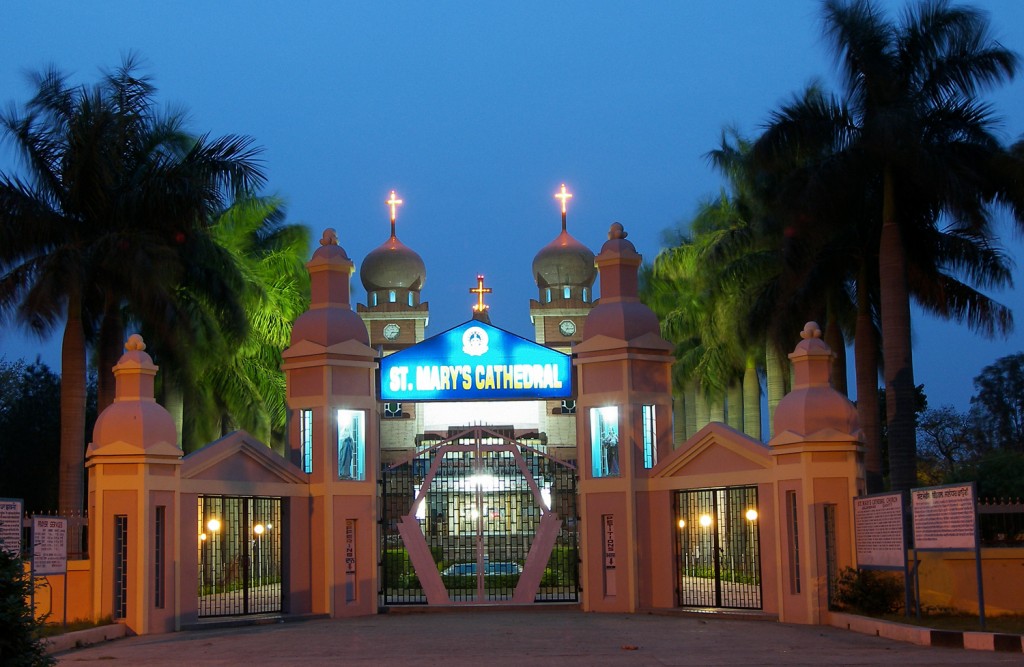
The famous Hariballabh Sangeet Mela is held in the memory of the sant-musician, Swami Hariballabh. It is organised at Devi Talab near the samadhi of the saint from 27 December to 30 December every year. . It is attended by classical singers and musician of repute from all over the country. According to the finding of the Punjab University, Swami Hariballabh came from a rich family of village Bajwara of district Hoshiarpur. He renounced the world and became a disciple of Swami Tulja Gir who was initiated him into the art of music. He toughs great heights in classical music and his dhrupadhs were his master pieces. Besides, being a master musician, he was a good composer of new tunes in classical music.
He attracted a large number of admirers and disciples. One of his disciples was Pandit Tolo Ram, a brahmin of Jalandhar. Besides being a lover of music, Pandit Tolo Ram had a great organizing ability and on the death of his guru, he put himself and his heart and soul to the service of the institution. He toured far and wide and collected funds for the mela. The advent of this great master on the stage of the Hariballabh became a place of pilgrimage for all top class magicians, without distinction of cast and creed. Heardly was there a classical singer of repute who did not visit the fair.
In 1956, a regular Sangeet Academy under the aegis of the Haribhallabh Sangeet Mahasabha was formed. The object of the Academy is to setup a centre in the Punjab for teaching and research in classical music. A syllabus has already been farmed and the teaching institution has been open with the objective of holding their own examination for award of diplomas and degrees.
The shrine is the smadh of Sh. Haribhallabh Bhai buld on the bank of the tank which goes by the name of Devi Talab. It is an unassuming single small-roomed construction in which has been place lingam (phallus) of Lord Shiva which is worshipped. The people come from distant place to enjoy Indian classical music. Admission to the samelan is free as also board and lodging during the day of the fair.
The Fair of Baba Sodal
The fair of Baba Sodal is associated with Sodal, a small boy who came to be respected as a baby-God. The fair is held to commemorate his death anniversary at his smadh. The fair is held once a year in the month of Bhadon which roughly corresponds to mid-September. The celebration take place on the 14th of Shukal Paksh (bright half of the lunar month), the day on which child deity left for his heavenly abode. The fair lasts for one day. in the early hours of the morning, women come in large numbers to make offering at the smadh.
The legend goes that Sodal was born in a family of Chadha clan of Khatri caste in Jalandhar City. It is said that one day the mother of Baba Sodal went to nearby pond to wash clothes. Despite her repeatedly asking to him to go back, he followed her. The mother lost temper and shouted at him, “Have you come here to die? Go and drown yourself in the pound.” It is said that Sodal asked her three times to repeater words which she did. Sodal then plunged into the water never to appear again. According to another version, he simply fell dead on the spot; according to still another version he transformed himself into a snake and bored himself into the earth.
The main place of worship is the smadh of Baba Sodal. In side the smadh, there is a painted portrait of Baba Sodal kept decorated with garlands and rosaries and is looked after by a separate priest. There is a pucca tank called ‘Baba Sodal-Da-Sarowar’. The offering at the smadh are distributed among the pilgrims and sprinkle a few drops on their body. Some have a dip in the tank.
Pilgrims of all religions come to fair from different parts of Punjab, Haryana, Delhi and Uttar Pradesh. Among the pilgrims, females preponderate who seek blessing for children and general well-being of their families.
AD 1947: The British Parliament passed the Indian Independence Act in July 1947 and India became Independent of 15 August 1947. The achievement of Independence was celebrated in the district, as in the rest of the country with great enthusiasm which was, however, marred by the communal riots and exodus of minority communities from both sides of the border, consequent upon the partition of the country.

